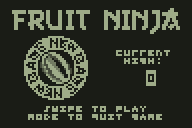 ²
²
 New online editor in beta
Like calculator programming? Spend a lot of time online? Following the success of the online ORG assembler, ClrHome is announcing the new Integrated Editor System, an online IDE for TI-BASIC, Axe, and Grammer projects. Integrated image and code editors with inline sprite editing, autocomplete, and many other features helps to simplify programming for calculators online.
New online editor in beta
Like calculator programming? Spend a lot of time online? Following the success of the online ORG assembler, ClrHome is announcing the new Integrated Editor System, an online IDE for TI-BASIC, Axe, and Grammer projects. Integrated image and code editors with inline sprite editing, autocomplete, and many other features helps to simplify programming for calculators online.
 ORG autocompletes!
The ORG online Z80 assembly IDE is now better than ever with such essential editor features as syntax highlighting and instruction autocompletion. As always, the webapp allows you to manage, host, and build your Z80 projects online for a variety of platforms. Or you could simply use it as an easy way to play around with Z80 assembly without ever having to install an editor or assembler.
ORG autocompletes!
The ORG online Z80 assembly IDE is now better than ever with such essential editor features as syntax highlighting and instruction autocompletion. As always, the webapp allows you to manage, host, and build your Z80 projects online for a variety of platforms. Or you could simply use it as an easy way to play around with Z80 assembly without ever having to install an editor or assembler.
 Fruit Ninja released
One small experimental calculator project turns out to be far more successful than first hoped. Besides featuring some highly detailed 3D animated graphics, the Fruit Ninja project introduces a strange but satisfying new way to play calculator games—by swiping your fingers across the keypad, as if it's a touchscreen on your calculator.
Fruit Ninja released
One small experimental calculator project turns out to be far more successful than first hoped. Besides featuring some highly detailed 3D animated graphics, the Fruit Ninja project introduces a strange but satisfying new way to play calculator games—by swiping your fingers across the keypad, as if it's a touchscreen on your calculator.
 I also finished up PapiJump by adding the menus (including both the main menu and the scrolling "Game Over" menu which were in the original iPhone game) and making a high score system that writes back the the program. No special modes, unfortunately, but I might do that later.
I also finished up PapiJump by adding the menus (including both the main menu and the scrolling "Game Over" menu which were in the original iPhone game) and making a high score system that writes back the the program. No special modes, unfortunately, but I might do that later.At least three people have died of toxic fume inhalation after what appears to be a calculator-burning ritual Monday morning. Another four are currently in a nearby hospital, where they are in critical condition.
Evidently, this resulted from an organized calculator-burning ceremony in which eight mutual friends took part.
One member of the cult, who miraculously escaped through a nearby window, explained the situation: "You know that Prizm thing? That color graphing calc Casio released a few weeks ago? We wanted to show our loyalty to Texas Instruments by getting together a group of friends and burning a couple of Prizms." Apparently this act of devotion turned deadly when the group forgot to open the windows of the warehouse, essentially trapping themselves in with the toxic smoke produced by burning electronic parts.
This event is painfully reminiscent of the Kindle-burning tragedy that left eight dead last year. That incident also involved a group of eight who together burned a pile of electronics in protest.
Just two months after the Department of Education's recommendation that calculator usage be restricted in schools, a recent survey shows that school districts across the country are already taking action to reduce the number of calculators in use in U.S. schools. The survey, conducted by Erron Surveying Services, asked 38 school districts in 22 states for their opinions on electronic calculating devices. Twenty-six of the districts surveyed, representing over a hundred high schools, said they would introduce new rules banning calculators from being used in high school courses. Most planned to put these rules into effect by the next school year, but eight in particular said the would at least "consider" applying these changes by January first of 2011. Another three districts had not officially adopted plans for phasing out calculator usage but were in the process of deciding.
These new rules, created after a Department study discovered that students could play games on many models of graphing calculators, would ban the use of all calculators with graphing capabilities in all high school classrooms. As expected, the news caused outrage from parents and students.
"We need our calculators!" exclaimed a junior we interviewed. "They're really useful! And we don't always use them to play games in class. We need them for math, too."
A math teacher at a Chicago-area high school agreed. "I've known for years that students like to keep games on their calculators, which they sometimes play in class. It becomes a problem when the student ignores me every class, but I don't think we should ban calculators. At least not yet. We're still very used to using graphing calculator technology as a way of quickly investigating and learning about many different subjects in math."
A superintendent at the same school district had a different opinion. "Math classes have existed for hundreds of years before calculators were invented," he pointed out. "Why can't we go back to the old days, when there weren't so many distractions in the classroom?"
A spokesperson for the Department of Education also argued that calculators were "disrupting the learning environment in our education systems." "It was crushing," he said. "We never thought that even calculators could be used for gaming. We even found some students who had completely replaced the operating systems of their calculators, so that they were no longer able to do math at all. We know that students and teachers may argue that the benefits outweigh the costs, especially in advanced-level math classes, but the fact remains: Calculators are a prime cause of the deterioration of American education." Referring to the rules already in effect in school districts nationwide banning the use of iPods and cellular phones in class, he claimed that restrictions on calculators would help schools maintain an "environment suitable to learning."

 I finally got bored enough to make all those site updates I'd wanted to do for the past few months. It might not look very different at first glance, but trust me: just look around, and you'll notice a lot of changes.
I finally got bored enough to make all those site updates I'd wanted to do for the past few months. It might not look very different at first glance, but trust me: just look around, and you'll notice a lot of changes.Welcome! ClrHome is a site and programming group with a variety of upcoming projects and finished products for the Texas Instruments line of graphing calculators, as well as an extensive collection of popular resources to help you make your own programs.